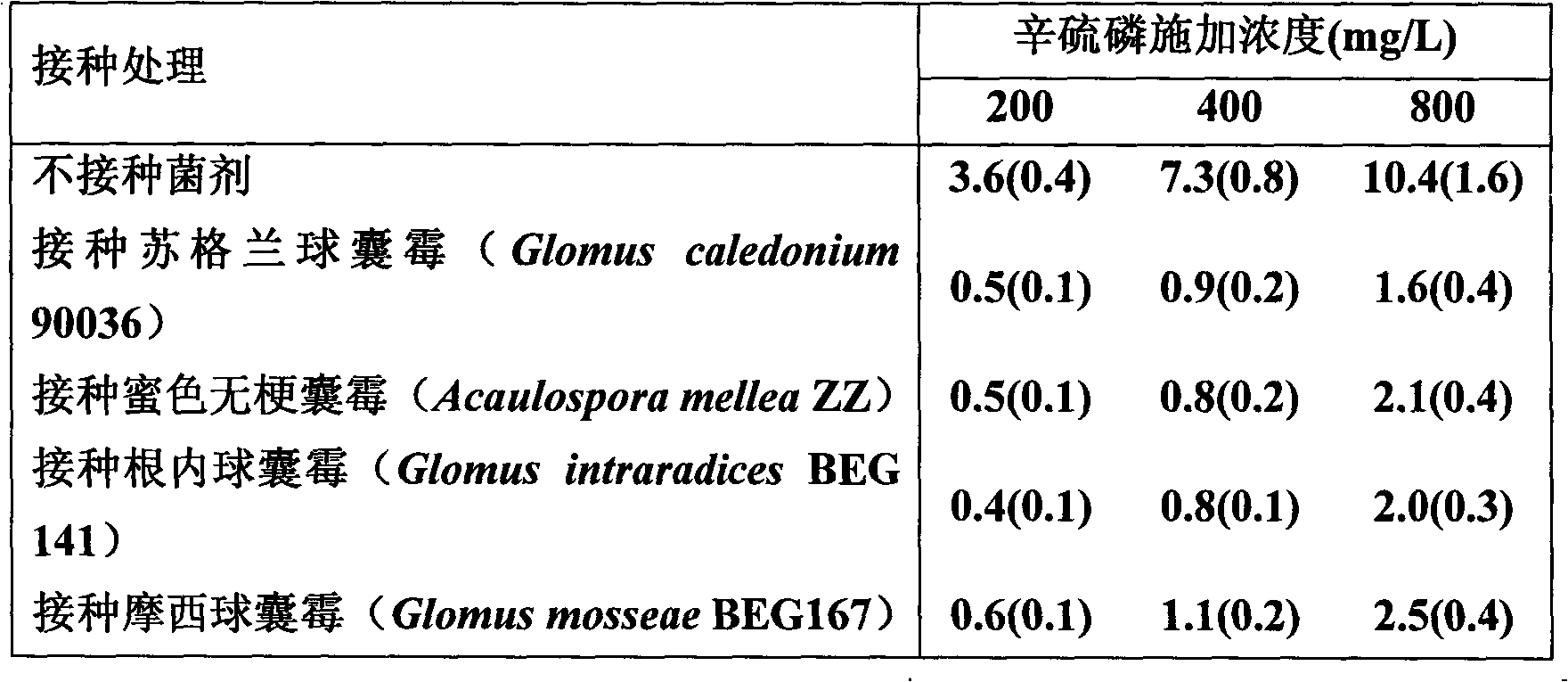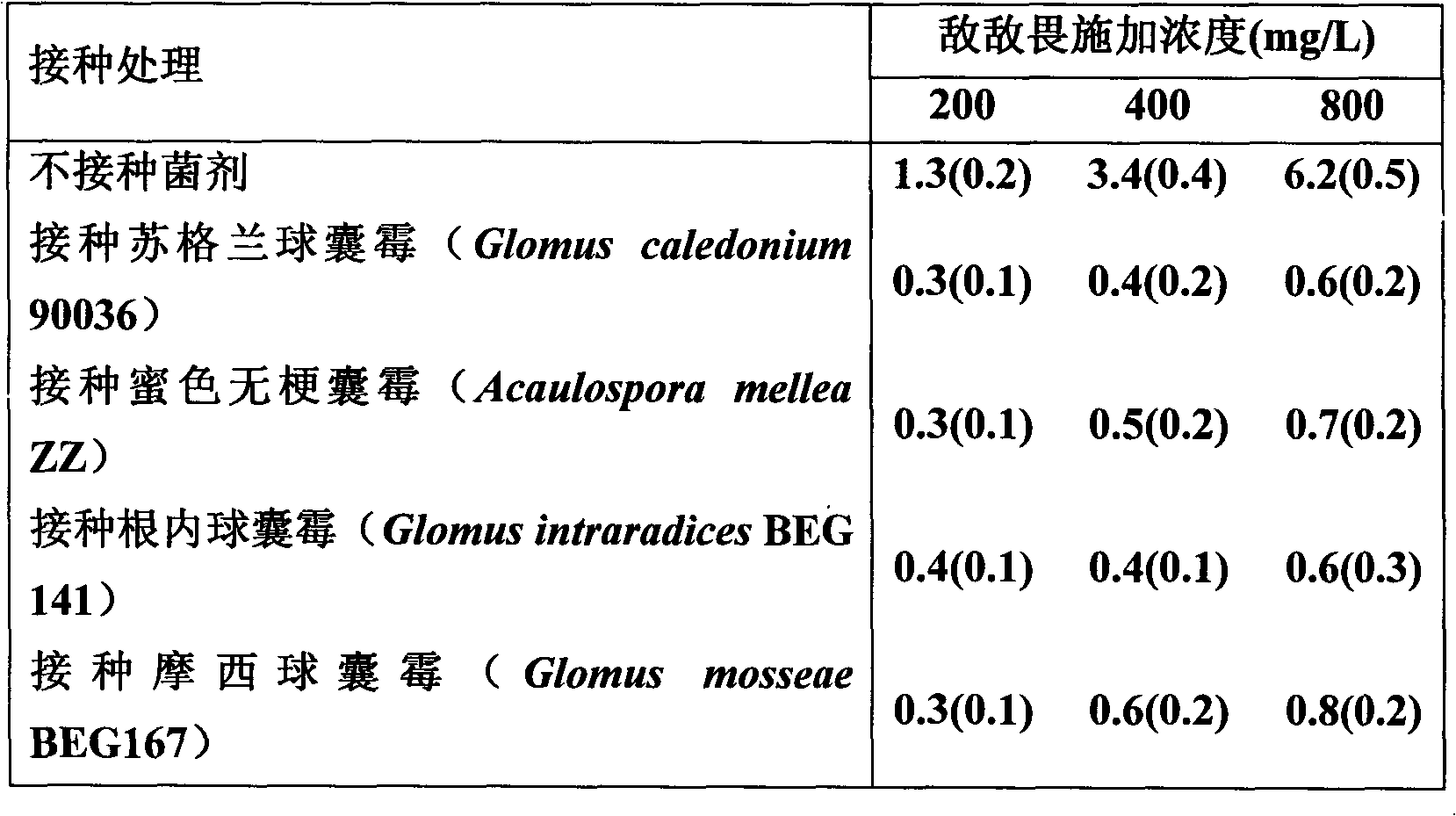Method for biologically restoring organic phosphorus pesticide polluted soil
A technology of organophosphorus pesticides and polluted soil, which is applied in the field of bioremediation of polluted soil, can solve the problems of accelerating the mineralization of organic matter, and has not yet seen the patent or product of polluted soil, and achieves the effect of promoting degradation, simple and practical method, and accelerating restoration
- Summary
- Abstract
- Description
- Claims
- Application Information
AI Technical Summary
Problems solved by technology
Method used
Image
Examples
Embodiment 1
[0024] (1) Preparation of arbuscular mycorrhizal fungal agent. Pass the river sand through a 1mm sieve, sterilize with high-pressure steam at 121°C for 2 hours, mix 7.8g of urea and 33g of superphosphate per 100kg of river sand to make a matrix, and inoculate the matrix with 5% inoculum containing Scotchball Arbuscular mycorrhizal fungi initial microbial inoculants of Glomus caledonium 90036, Acaulospora mellea ZZ, Glomus mosseae BEG167, Glomus intraradices BEG 141 , and then add about 20% water to the matrix, sow the seeds of sudan grass, manage them routinely, and harvest the arbuscular mycorrhizal fungal agent after 3-4 months. Cut off the upper part of the Sudan grass, cut the root into pieces, mix it with the substrate, and air dry it for later use.
[0025](2) Test treatment. Crush 1200g of air-dried farmland soil, pass through a 1cm sieve, put it into a 1L ceramic pot, and manually apply phoxim and dichlorvos to the contaminated soil. Three pesticide concentration le...
PUM
 Login to View More
Login to View More Abstract
Description
Claims
Application Information
 Login to View More
Login to View More - R&D
- Intellectual Property
- Life Sciences
- Materials
- Tech Scout
- Unparalleled Data Quality
- Higher Quality Content
- 60% Fewer Hallucinations
Browse by: Latest US Patents, China's latest patents, Technical Efficacy Thesaurus, Application Domain, Technology Topic, Popular Technical Reports.
© 2025 PatSnap. All rights reserved.Legal|Privacy policy|Modern Slavery Act Transparency Statement|Sitemap|About US| Contact US: help@patsnap.com


